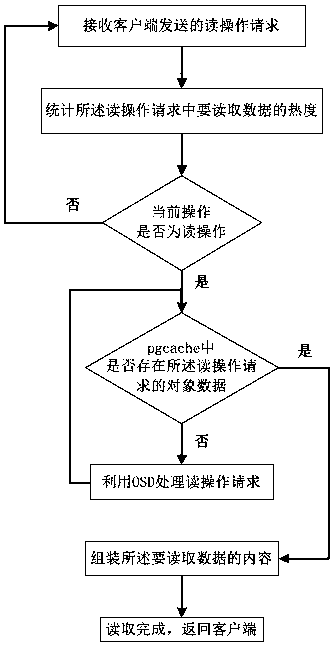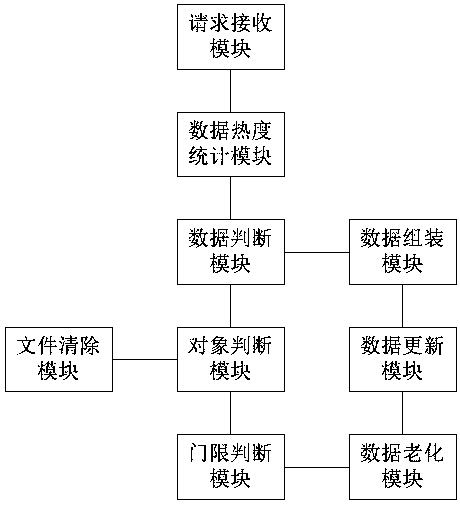Data reading method, system and device based on distributed storage system
A distributed storage and data reading technology, applied in the direction of electrical digital data processing, input/output process of data processing, instruments, etc., can solve the problem of long delay in reading operations, decreased space utilization, and decreased read and write performance, etc. problems, to achieve the effect of improving data reading speed, highlighting substantive features, and improving read and write performance
- Summary
- Abstract
- Description
- Claims
- Application Information
AI Technical Summary
Problems solved by technology
Method used
Image
Examples
Embodiment 1
[0043] Such as figure 1 The shown data reading method based on a distributed storage system includes the following steps:
[0044] Step 1: Receive the read operation request sent by the client.
[0045] Step 2: Count the popularity of the data to be read in the read operation request.
[0046] Step 3: Determine whether the current operation is a read operation, if yes, go to step 4; if not, go to step 1.
[0047] Step 4: Determine whether the object data requested by the read operation exists in pgcache, if it exists, go to step 6; if not, go to step 5.
[0048] Step 5: Use the OSD to process the read operation request, and go to step 4 after processing.
[0049] Step 6: Assemble the content of the data to be read.
[0050] Step 7: After reading is complete, return to the client.
[0051] A data reading method based on a distributed storage system proposed in this embodiment includes: receiving a read operation request sent by a client; counting the popularity of the data to be read in the...
Embodiment 2
[0053] Such as figure 2 The shown data reading method based on a distributed storage system includes the following steps:
[0054] Step 1: Receive the read operation request sent by the client.
[0055] Step 2: Count the popularity of the data to be read in the read operation request.
[0056] Step 3: Determine whether the current operation is a read operation, if yes, go to step 4; if not, go to step 1.
[0057] Step 4: Determine whether the object data requested by the read operation exists in pgcache, if it exists, go to step 9; if it does not exist, go to step 5.
[0058] Step 5: Determine whether the object requested by the read operation exists in pgcache, if it exists, go to step 8; if it does not exist, go to step 6.
[0059] Step 6: Determine whether pgcache reaches the threshold, if yes, go to step 7; if not, go to step 8.
[0060] Step 7: Delete the least hot data in pgcache.
[0061] Step 8: Update the object data requested by the read operation in pgcache, and go to step 4 af...
PUM
 Login to View More
Login to View More Abstract
Description
Claims
Application Information
 Login to View More
Login to View More - R&D
- Intellectual Property
- Life Sciences
- Materials
- Tech Scout
- Unparalleled Data Quality
- Higher Quality Content
- 60% Fewer Hallucinations
Browse by: Latest US Patents, China's latest patents, Technical Efficacy Thesaurus, Application Domain, Technology Topic, Popular Technical Reports.
© 2025 PatSnap. All rights reserved.Legal|Privacy policy|Modern Slavery Act Transparency Statement|Sitemap|About US| Contact US: help@patsnap.com



